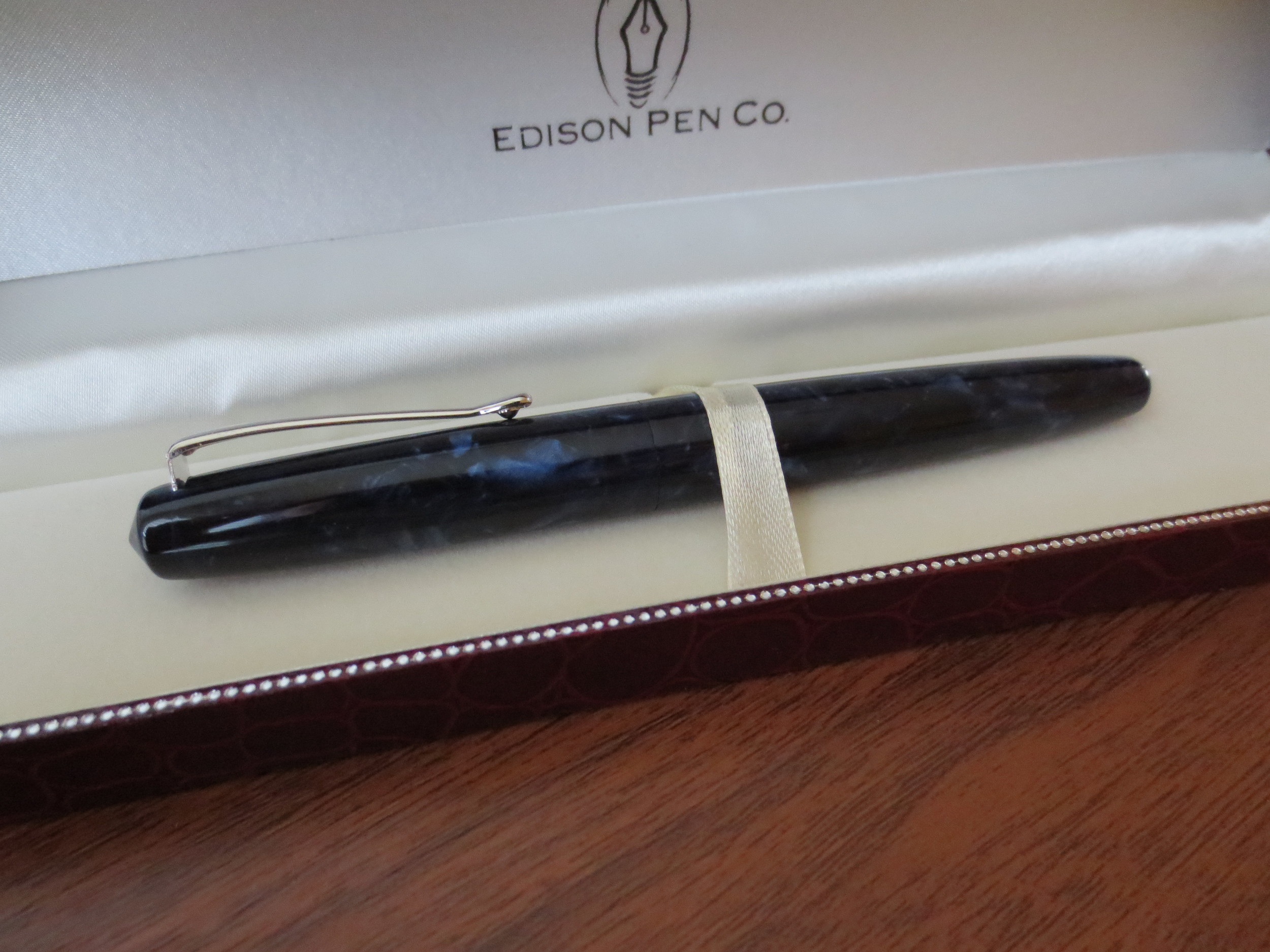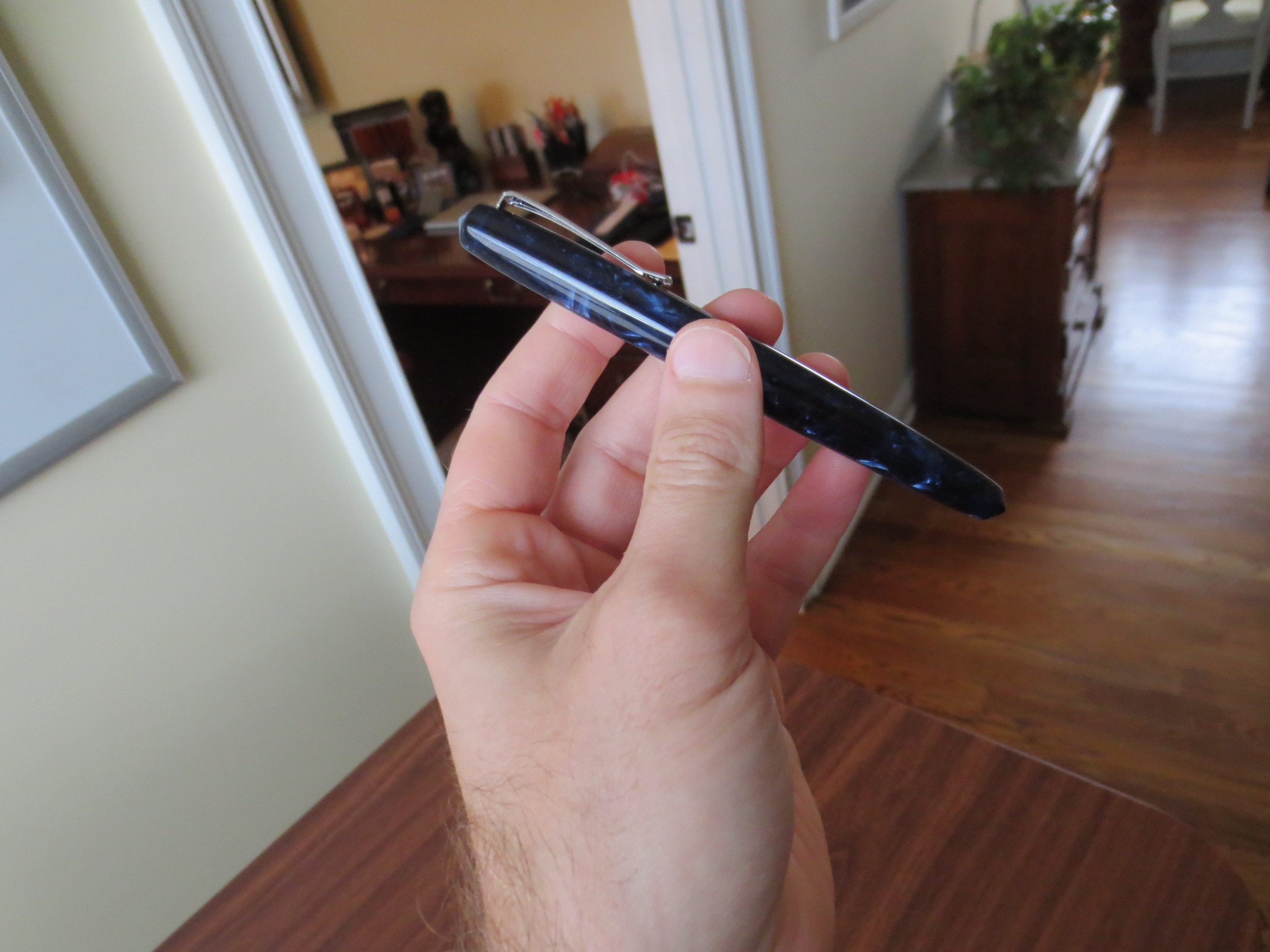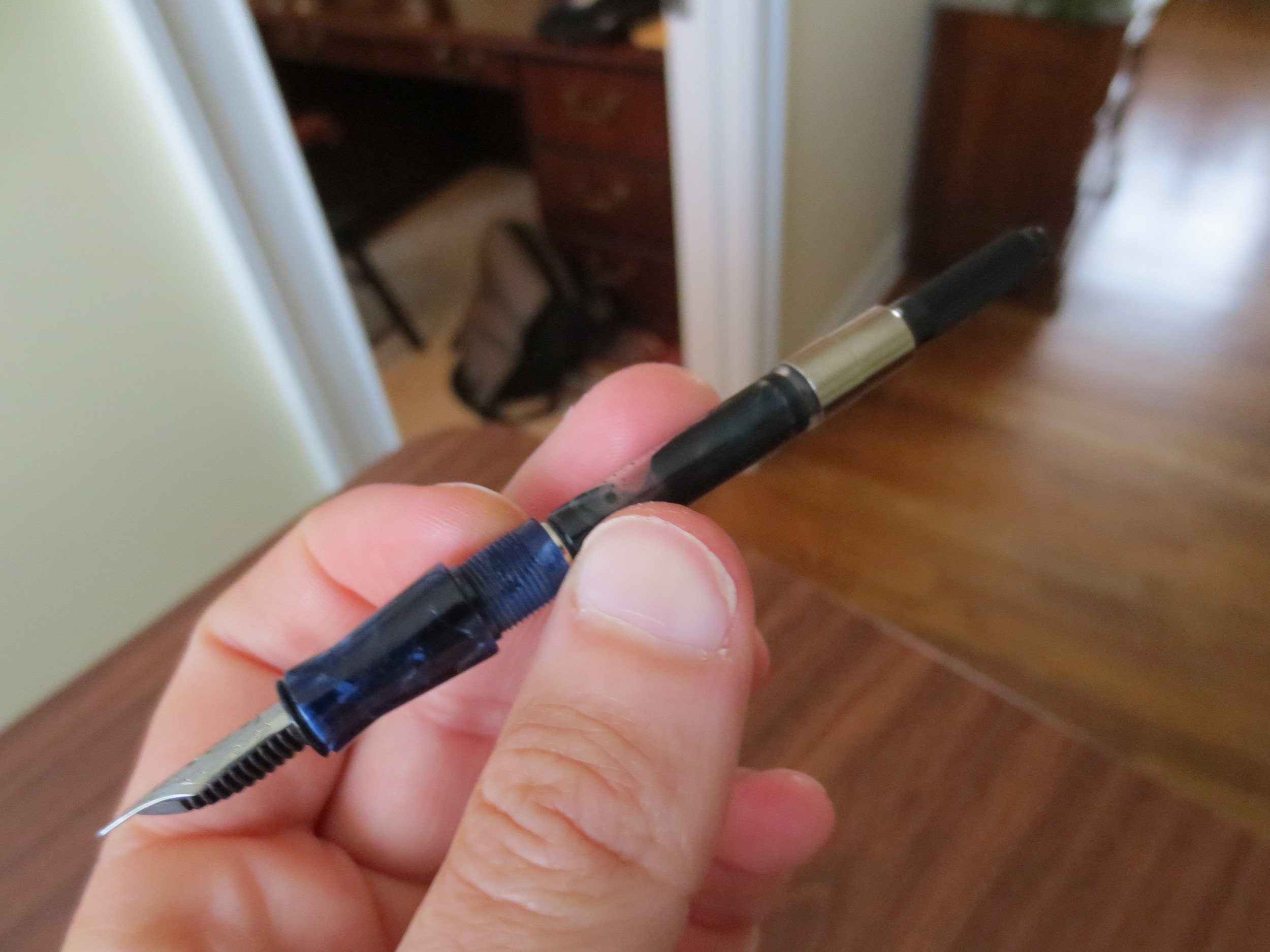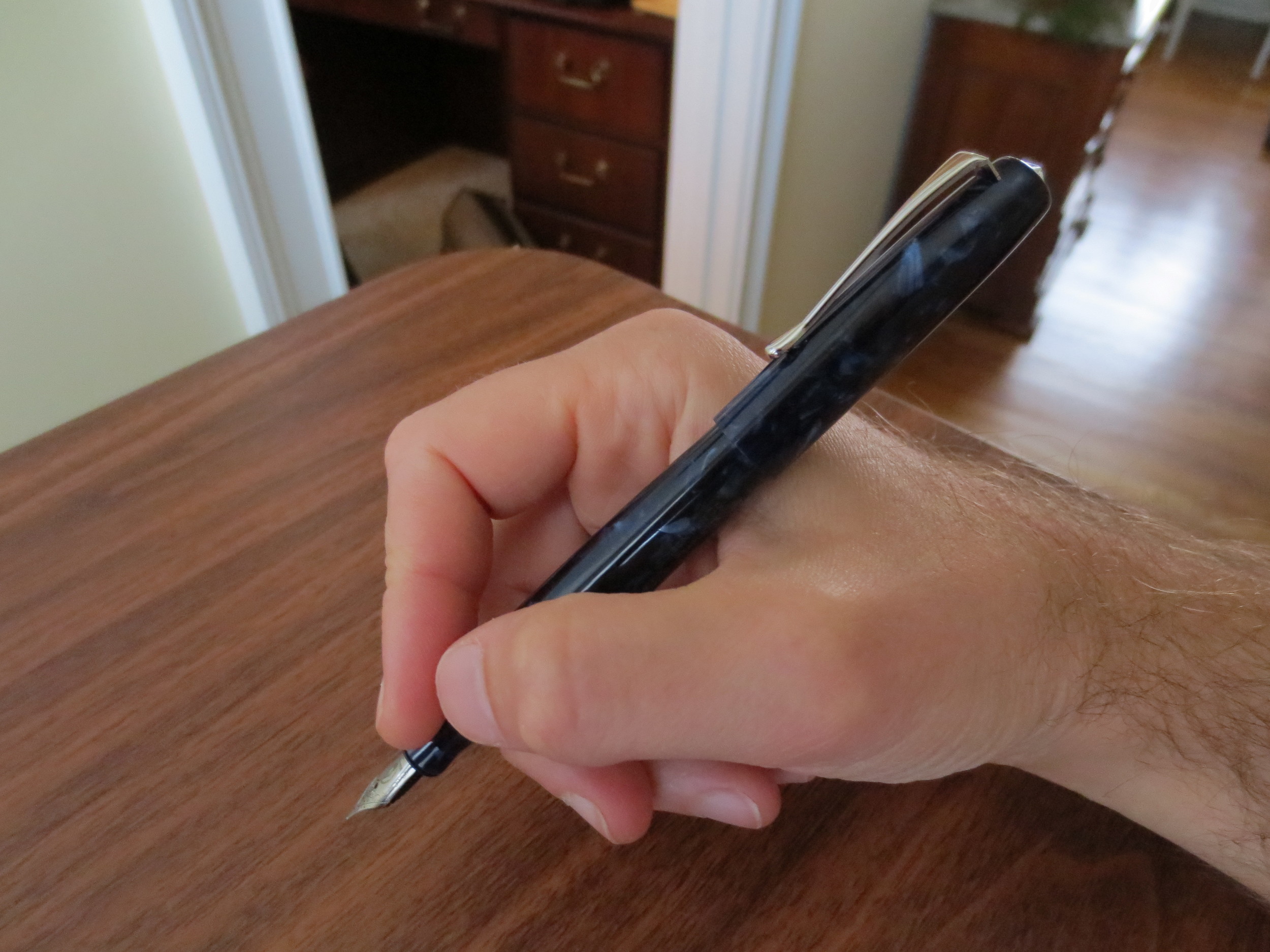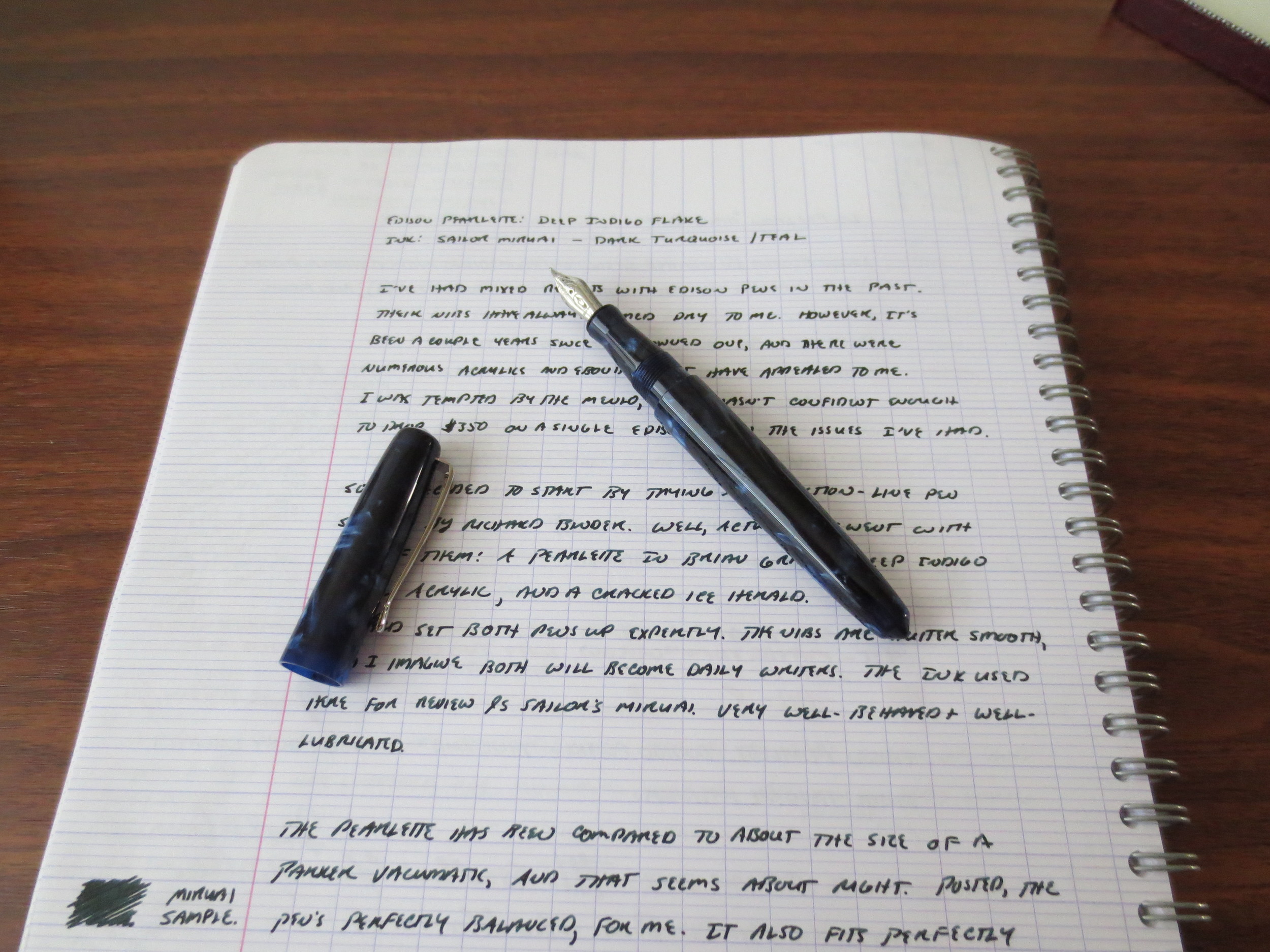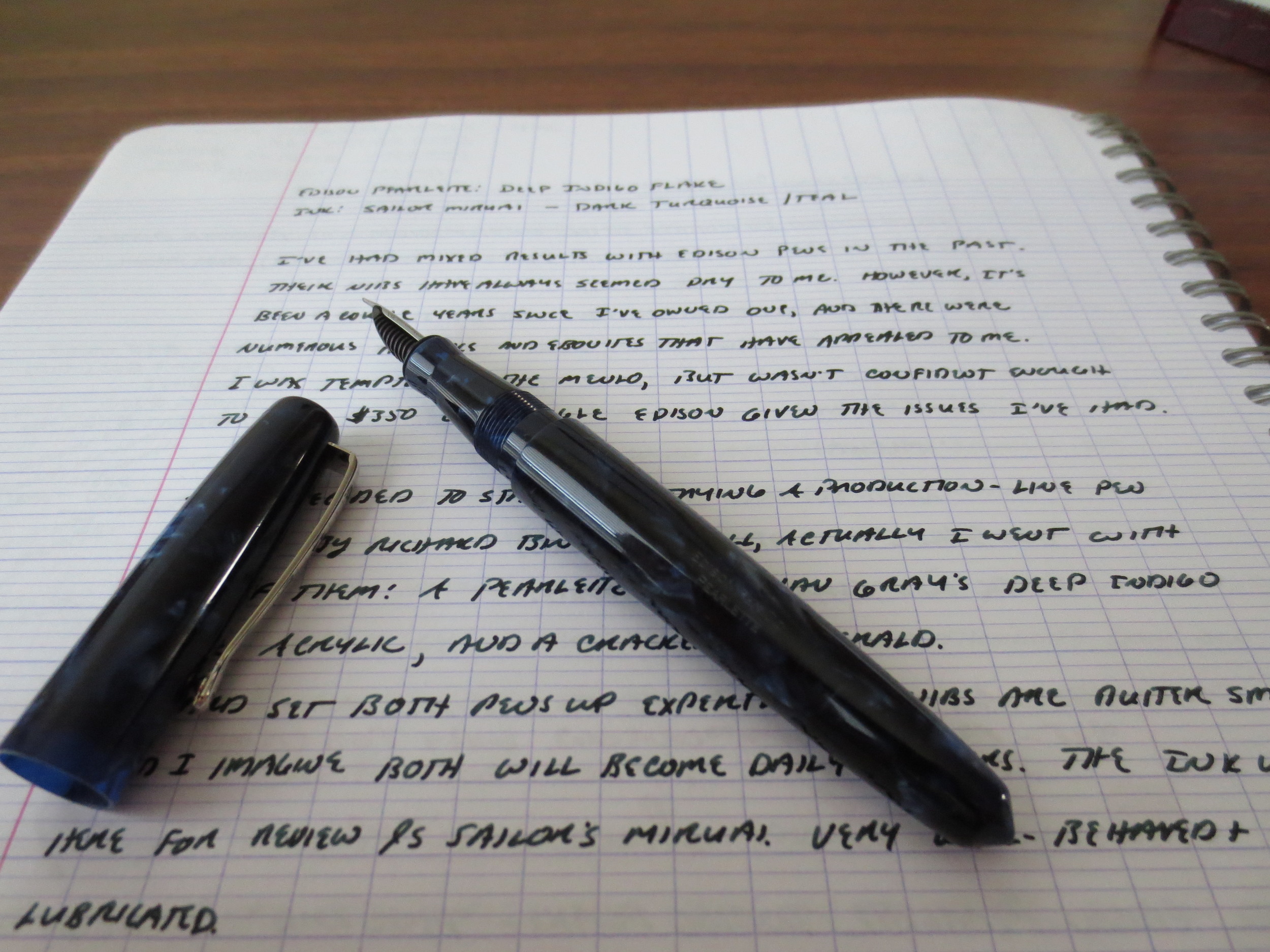When I started this blog, I didn't intend for it to cover fountain pens exclusively, though I've gone in that direction. I do use other kinds of writing implements, primarily woodcase pencils and gel pens. This past week, for some reason, I just felt like using these more, probably because I had not broken them out in a while. So this week I'll take a break from my fountain pens and explore a different aspect of analogue writing. First up: the Uni Signo DX.
From left: Blue-Black; Orange; Red-Black; Green-Black; and Brown-Black.
I would say that the Uni Signo DX is one of the two most popular Japanese "micro" gel ink pens that are available in ultra-fine tip sizes, the other being Pilot's Hi-Tec-C. I'm a huge fan of both. The two pens have similar performance, but are built differently. The Signo DX has a conical tip, and the Pilot Hi-Tec-C has a needle-point. The ink in both pens is similar in terms of behavior, but I do find that the Hi-Tec-C writes a sharper line.
Here's a shot of the Signo DX conical tip. Compare with the Hi-Tec-C's needle point, below.
I'm just a fan of needle-point pens in general. The Hi-Tec-C does it as well as any.
Personally, I favor the Hi-Tec-C, but ultimately it's a matter of personal preference and I use both. I do find that the Signo DX is more sensitive to the pen's position vis-a-vis the paper, and it tends to skip unless you are holding the pen close to vertical. With few exceptions, I have not had that issue with the Hi-Tec-C. Some people have had the exact opposite experience, but part of this may be that I favor the .4mm Hi-Tec-C, which is somewhat less temperamental than the .3mm (or narrower) tip sizes. What the Signo DX does have going for it is the wide selection of colors. Here, I've provided a sample with the five that I have: Green-Black; Blue-Black; Orange; Red-Black; and Brown-Black. I can't say whether or not the Signo DX "Black" colors are the same that you find in the Uniball "BLX" series you see in U.S. office supply stores, but that may be an interesting experiment for a different time....
Writing Samples from the five Uni Signo DX Gel pens that I have, all in .38mm tip size. For comparison purposes, I've also included a writing sample from a blue-black Pilot Hi-Tec-C gel pen, which I find writes a slightly cleaner line than the conical-tip DX.
The Signo DX is technically Japan-only, but it's relatively easy to find. I purchased these at Kinokuniya Bookstore in New York City, but you can also find them at Jetpens.com.
















